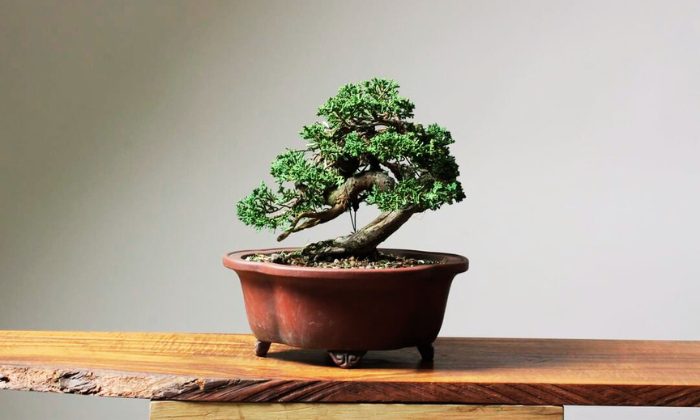Low Maintenance Front Yard Landscaping Tips and Ideas
Low Maintenance front yard landscaping plays a crucial role in enhancing the overall aesthetic appeal…
Bonsai tree care, delicately sculpted to embody the essence of nature’s magnificence, have a way of inspiring tranquillity and wonder. If you’re fascinated by the idea of cultivating your own bonsai tree, Robert Complete Care’s Bonsai Tree Care service is here to guide you on this enchanting journey. In this article, we will explore the art of bonsai tree care, both indoors and outdoors, and provide insights into the meticulous nurturing process involved.
Bonsai, which translates to “planted in a container,” is an art form that originated in China and was later refined in Japan. These miniature trees evoke a sense of serenity and harmony, encapsulating the beauty and resilience of nature in a confined space. The care and cultivation of bonsai trees require patience, skill, and a deep understanding of the unique needs of these living works of art.

Taking care of a bonsai tree requires attention to detail and adherence to specific care practices. When cultivating bonsai trees indoors, the following considerations should be taken into account:
Selecting the appropriate bonsai tree species for indoor cultivation is crucial. Not all trees thrive in indoor environments, as they require specific lighting, temperature, and humidity conditions. Some popular indoor bonsai tree species include the Ficus, Juniper, and Jade.
Proper lighting is essential for the healthy growth of bonsai trees. Most indoor bonsai trees prefer bright, indirect light. Placing your bonsai near a south or east-facing window can provide the ideal lighting conditions. Alternatively, you can utilise artificial grow lights to supplement natural light.
Watering is a fundamental aspect of bonsai tree care. Achieving the right balance of hydration is crucial, as both under-watering and over-watering can harm your bonsai tree. It’s recommended to water your bonsai tree when the topsoil begins to feel slightly dry, ensuring thorough hydration without water logging the roots.
Maintaining suitable temperature and humidity levels is essential for the health and vitality of your indoor bonsai tree. Most bonsai tree species thrive in temperatures between 60-75°F (15-24°C). Additionally, adequate humidity can be achieved by placing a tray with water near the bonsai or using a humidifier.
Pruning is a vital aspect of bonsai tree care, allowing you to maintain the desired shape and size of your tree. Regular pruning helps promote healthy growth, encourages the development of fine branches, and enhances the overall aesthetics of your bonsai.
To ensure optimal growth and nourishment, fertilising your bonsai tree is essential. Choose a high-quality bonsai-specific fertiliser and apply it during the growing season according to the manufacturer’s instructions. Additionally, periodic repotting using well-draining bonsai soil helps prevent root rot and provides the necessary nutrients for healthy growth.
Like some other plant, bonsai trees are defenseless to irritations and sicknesses.Common pests include aphids, spider mites, and scale insects. Regularly inspecting your bonsai tree for signs of infestation and promptly treating any issues will help keep your tree healthy and thriving.
Among the diverse range of bonsai tree species, Juniper bonsai trees hold a special place. Let’s delve into the specific care requirements for these magnificent trees:
Juniper bonsai trees are known for their stunning foliage, which varies in shades of green and blue. These trees are hardy and can withstand a wide range of temperatures, making them popular choices for bonsai enthusiasts.
Juniper bonsai trees thrive in areas with ample sunlight. They require at least four hours of direct sunlight daily to ensure healthy growth. Junipers can tolerate colder temperatures, but protection should be provided during freezing winter conditions.
Junipers prefer slightly drier soil compared to other bonsai tree species. Allow the topsoil to dry out partially between watering sessions. Well-draining bonsai soil helps prevent waterlogging, ensuring the roots remain healthy.
Pruning and wiring are crucial aspects of maintaining the desired shape and form of your Juniper bonsai tree. Junipers respond well to pruning, and regular trimming encourages back-budding, leading to denser foliage. Wiring can be applied during the tree’s growth phase to guide branches into the desired position.
Juniper bonsai trees are generally resilient and less prone to diseases compared to other species. However, they can be susceptible to fungal infections, particularly if overwatered. Proper watering practices and good airflow around the foliage can help prevent disease development.
Ficus bonsai trees, with their graceful aerial roots and glossy foliage, are another popular choice among bonsai enthusiasts. Let’s explore the care guidelines for these captivating trees:
Ficus bonsai trees belong to the Ficus genus, which includes a wide range of species known for their adaptability and tolerance to various indoor conditions. These trees exhibit vibrant green leaves and intricate aerial roots, adding a touch of natural beauty to any space.
Ficus bonsai trees thrive in bright, indirect light. They should be placed near a window that provides filtered sunlight. These trees prefer temperatures between 60-75°F (15-24°C), making them well-suited for indoor cultivation.
Ficus bonsai trees require consistent moisture without waterlogging the roots. Water your tree when the topsoil begins to dry out, ensuring thorough watering. Ficus trees benefit from regular misting to maintain adequate humidity levels.
Regular pruning is essential for shaping and maintaining the desired form of your Ficus bonsai tree. Trimming back new growth and maintaining a balanced silhouette will help achieve the desired aesthetic appeal. Wiring can also be used to guide branches and encourage a well-structured bonsai tree.
Ficus bonsai trees can attract pests such as aphids, scale insects, and mealybugs. Regularly inspecting your tree for signs of infestation and taking prompt action using organic pest control methods will help keep your Ficus bonsai healthy and thriving.
To embark on your bonsai tree care journey, it’s essential to have the right tools and supplies at your disposal. A bonsai tree care kit typically includes:
Taking care of bonsai trees requires dedication and a willingness to learn. While bonsai tree care can be challenging at times, it is a highly rewarding endeavour. Here are a few key considerations:
Really focusing on a bonsai tree is a drawn out responsibility. Bonsai trees require regular attention, including watering, pruning, and training. Understanding and embracing the commitment involved is essential for successful bonsai tree care.
Bonsai tree care is a skill that can be learned and honed over time. Reading books, attending workshops, and seeking guidance from experienced bonsai enthusiasts can help you develop the necessary skills to care for your bonsai trees effectively.
Patience is a virtue when it comes to bonsai tree care. It takes time for trees to develop and mature into the desired form. Dedication to regular maintenance and the ability to appreciate the gradual growth of your bonsai tree are key to success.
Robert Complete Care’s Bonsai Tree Care service is dedicated to assisting bonsai enthusiasts in nurturing the elegance of nature. Whether you’re a beginner or an experienced enthusiast, understanding the specific care requirements for different bonsai tree species is essential for their well-being and longevity. By following the guidelines provided in this article, you can embark on a fulfilling journey of cultivating and caring for these living works of art.If you’re interested in exploring the world of bonsai tree care further, Robert Complete Care’s Bonsai Tree Care service is available to provide assistance and guidance.
Our committed group is here to give you the data and backing you want. We value your interest and look forward to hearing from you. Well! Contact us.
It's crucial to water your bonsai tree when the topsoil begins to feel slightly dry. The frequency of watering depends on various factors such as tree species, pot size, and environmental conditions. Avoid over-watering or letting the soil completely dry out.
Yes, bonsai trees can be kept outdoors, depending on the species and climate. Some trees require outdoor conditions to thrive, while others can be cultivated indoors. Understanding the specific needs of your bonsai tree will help you determine the best location for its growth.
Fertilising your bonsai tree during the growing season is important to provide it with essential nutrients. The frequency and type of fertiliser depend on the species and the specific instructions provided by the manufacturer. Avoid over-fertilization, as it can harm the tree.
Yes, creating a bonsai tree from scratch is possible, but it requires time, patience, and knowledge of bonsai techniques. It involves selecting a suitable tree species, pruning, wiring, and training it to achieve the desired form. Starting with a young tree or sapling is recommended for beginners.
Over-watering, inadequate lighting, improper pruning, and using the wrong soil are some common mistakes to avoid in bonsai tree care. It's essential to educate yourself about the specific needs of your bonsai tree species and follow proper care practices to ensure its health and vitality.
Low Maintenance front yard landscaping plays a crucial role in enhancing the overall aesthetic appeal…
How to get rid of moss in your lawn can be a persistent problem, often…
Lawn fungus represents a significant challenge for homeowners and landscape professionals, impacting the aesthetic and…
Best time to water lawn and maintaining a lush, green lawn often involves more than…
Ensuring optimal grass growth is crucial for maintaining a lush and healthy lawn. One of…

Robert’s Complete Care has a proven track record of providing creative, high-quality lawn care Whittier services, CA area.
Copyright © 2023. All rights reserved Robert's Complete Care | Powered by Localpro1.